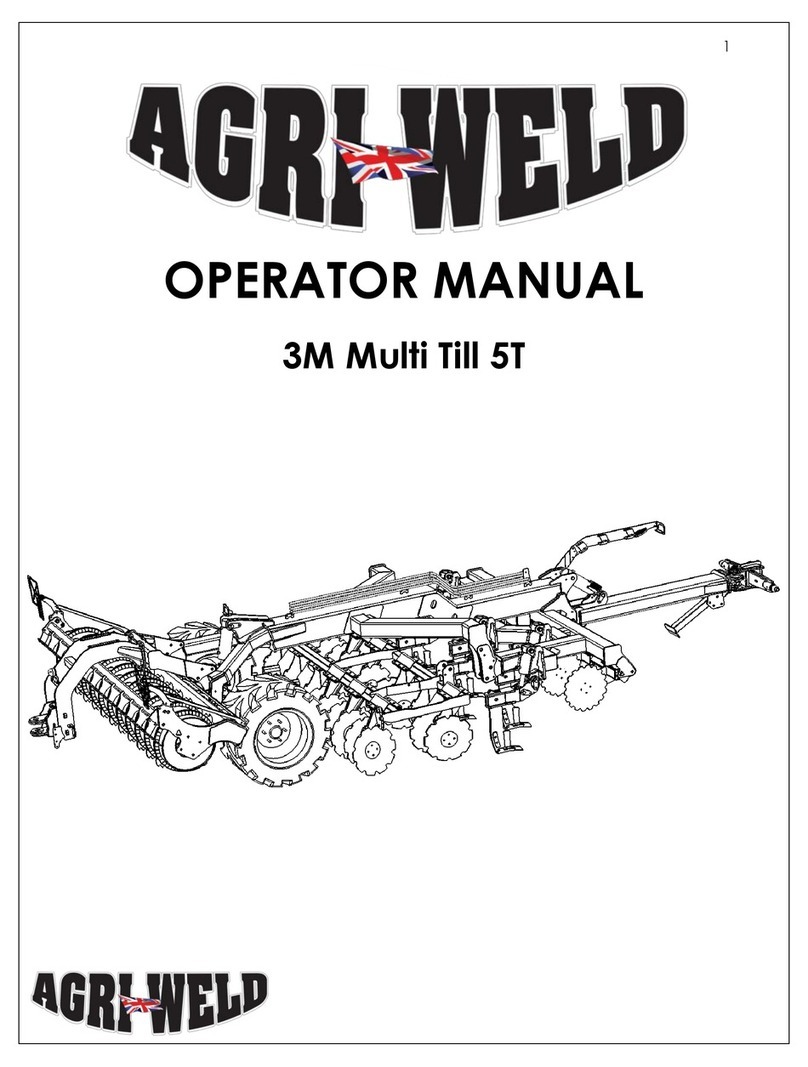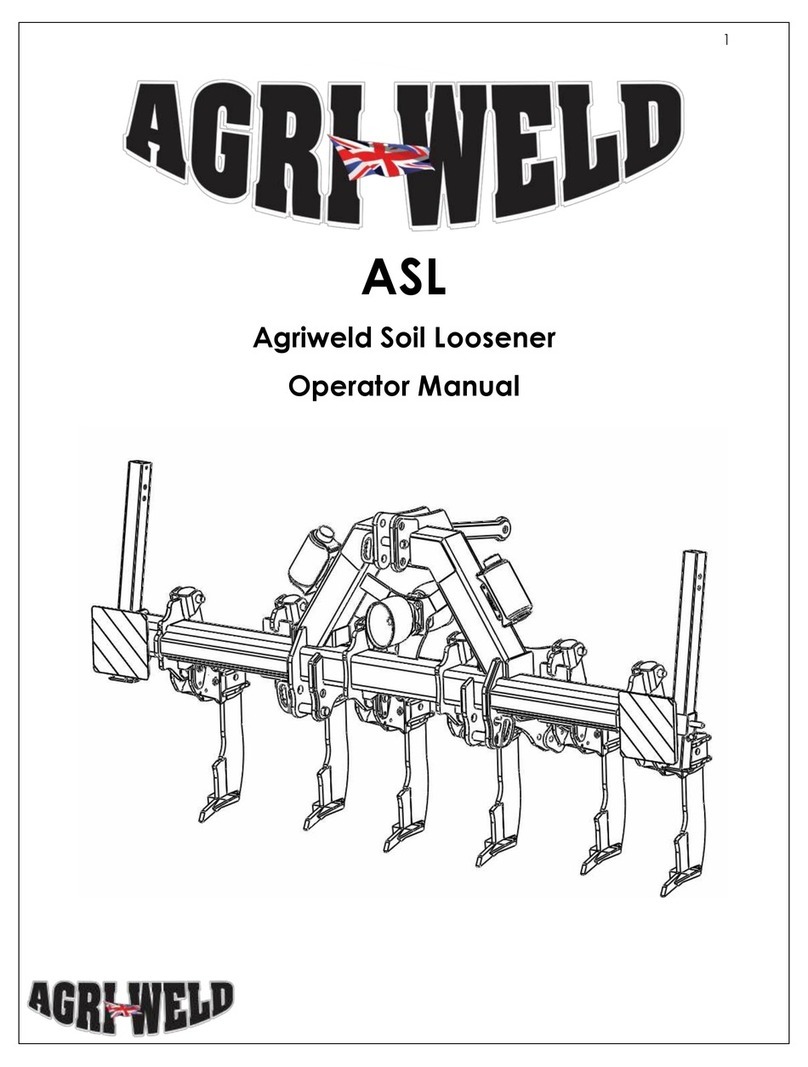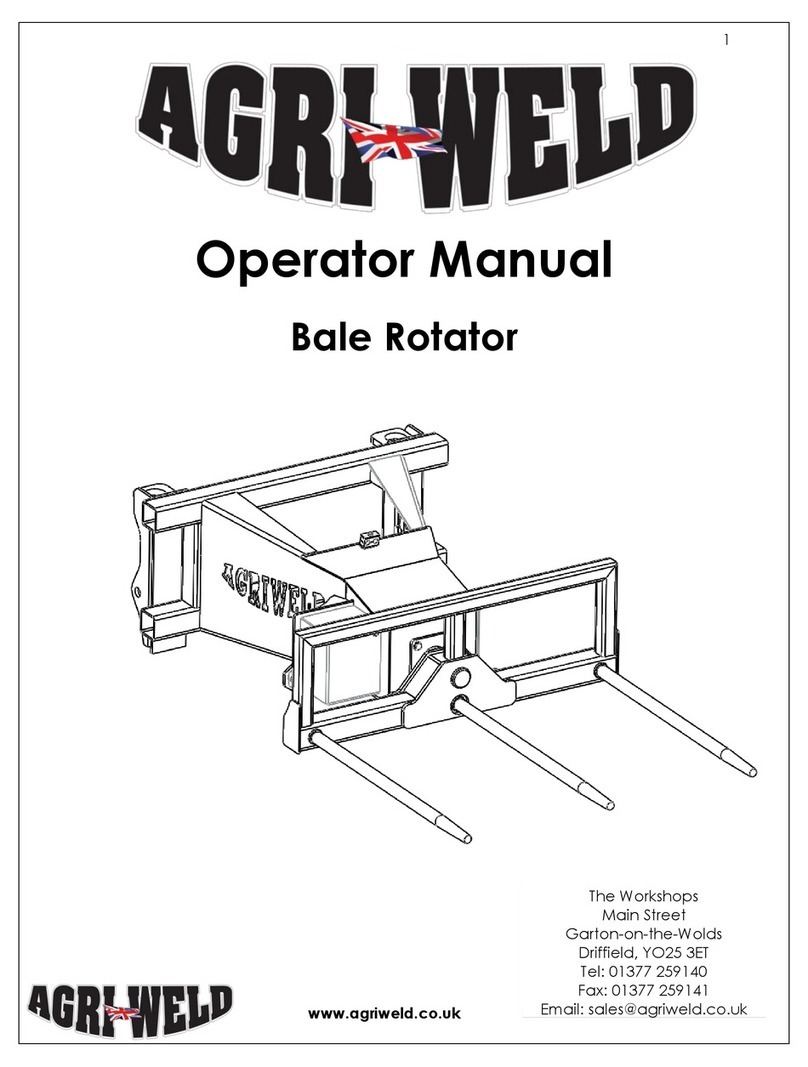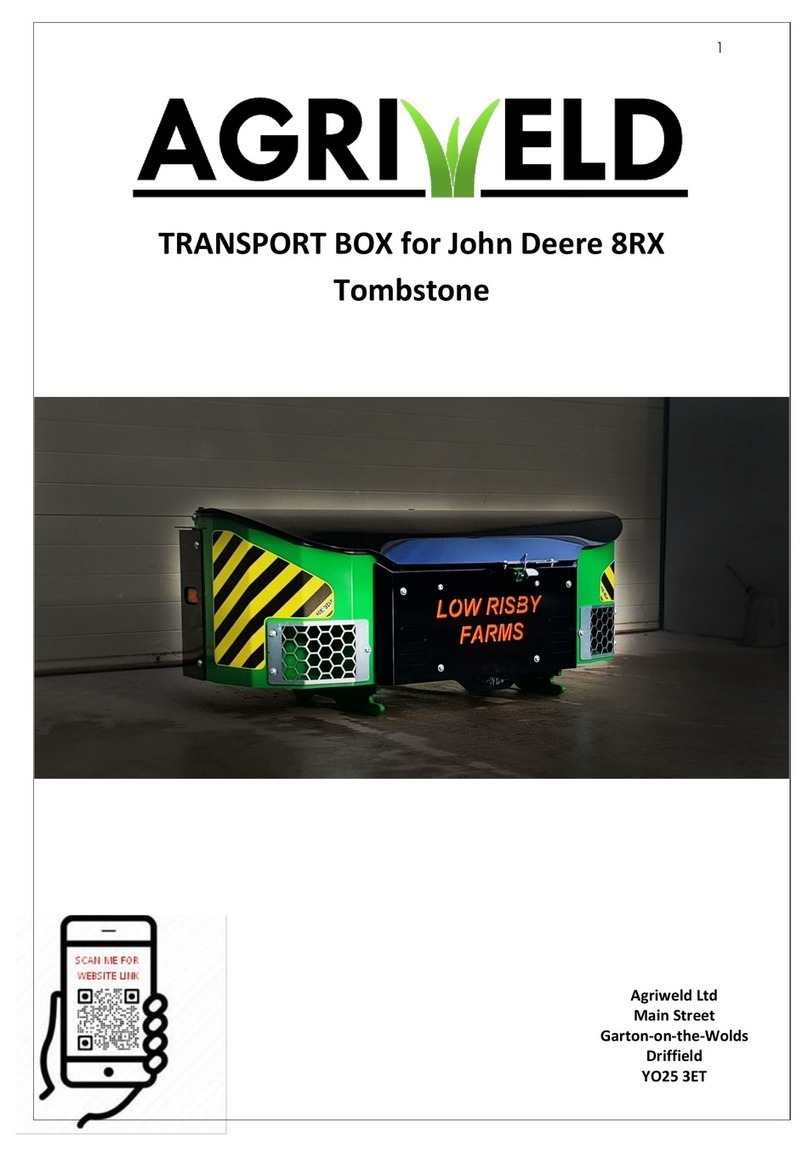4
QUALIFICATION AND TRAINING
•Experienced* personnel only may perform any work on, or with the product. Statutory minimum
age limits must be observed.
•Only trained and instructed staff, with the correct certification or licence to use, operate, set up
and maintain this product should be authorised to do so. Individual responsibilities of personnel
concerning operation, setting up, maintenance and repair must be clearly established.
•Define the product operator’s responsibilities – also with regard to observing traffic regulations.
The operator must have the authority to refuse any instructions issued by third parties, which
contravene safety.
•Persons undergoing training or instruction should not be allowed to work on or with the product
unless they are under the constant supervision of an experienced person.
•The use of spare parts, accessories and ancillary equipment not supplied and/or not approved by
Agriweld could have detrimental effects to this product or its functions and hence impair the
active and/or passive driving and/or operational safety (accident prevention).
•Agriweld shall not be liable for any damage caused by the use of spare parts, accessories and
ancillary equipment not supplied and/or approved by Agriweld.
•Conversions of, or modifications to the product may only be carried out after consultation with
Agriweld.
*Experienced personnel are classed as those persons with appropriate engineering knowledge and
training from an approved provider, supplemented with experience of working with this type of
activity.
GENERAL SAFETY
Read the instruction manual and follow the instructions given.
Take care when hitching up or unhitching the product to and from the tractor via the linkage.
It is forbidden to allow any persons to sit or ride on the product at any time.
If relevant, the tractor should be fitted with enough front-end weights for stability and to maintain
secure steering. This is dependent upon many variables, including those such as ground conditions,
working depth and soil type, etc.
Driving, steering and braking characteristics can be influenced by Agriweld products. The operator must
ensure adequate steering and braking ability.
Use the handler’s position control when coupling the product to the tractor.
Do not stand between tractor and product during connection or while it is being raised/lowered on the
tractor linkage.
































